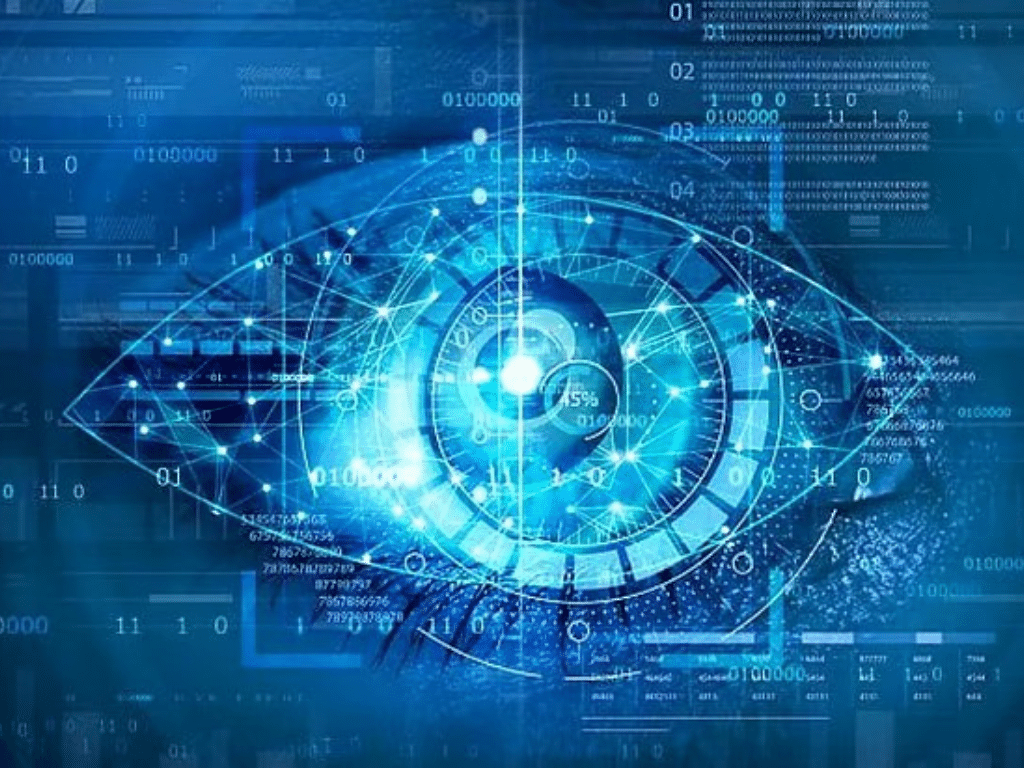AI in Computer Vision: Deep Learning Algorithms for Image Recognition
Artificial Intelligence (AI) has significantly revolutionised various domains, and one of the most transformative applications is AI in computer vision.
From healthcare diagnostics to autonomous vehicles and smart surveillance, computer vision enables machines to interpret and understand visual information with high accuracy and efficiency, just like the human eye.
At the heart of this technological shift lies deep learning algorithms.
Deep learning has revolutionised the field of computer vision and image recognition, enabling computers to see and understand digital images with unprecedented accuracy. Deep learning has transformed both simple tasks like facial recognition and complex processes such as image segmentation and 3D reconstruction.
The unmatched capabilities of computer vision paired with deep learning algorithms are now empowering major industries such as application development.
With this blog, we will uncover how AI, driven by deep learning algorithms, is reshaping image recognition in computer vision. We will also explore the role of deep learning in image recognition and some of its key applications.
What is Computer Vision?
Computer vision is a subset of artificial intelligence (AI) that enables machines to automatically interpret and process images with high accuracy and efficiency. To achieve this, computer vision uses deep learning and machine learning models that further empower different processes like multiplatform mobile app development.
Using the capabilities of computer vision, machines can easily perform tasks such as image classification, object detection, facial recognition, scene understanding, and image generation. This has ultimately led to a considerable increase in the computational power of systems with more efficient data processing.
Understanding Deep Learning Algorithms
Deep learning is an advanced field of machine learning (ML) that aims to extract high-level abstractions and improve models using a data-driven approach. It utilizes artificial neural networks, mimicking the learning process of the brain, to recognize patterns and identify objects in the images.
Deep learning algorithms are trained to process data, learn from it, and then apply their knowledge to new, unseen data. Unlike traditional machine learning models, models using deep learning algorithms can learn more complex and abstract patterns as they are trained on vast amounts of data.
Benefits of Deep Learning in Computer Vision and Image Recognition
The application of deep learning in computer vision and image recognition brings numerous advantages for different types of systems and models. From website development services to security system developers and autonomous car manufacturers, several industries can benefit from these new-edge technologies.
Following are some prominent benefits that the integration of deep learning in computer vision and image recognition offers:
Unparalleled accuracy: Deep learning algorithms have demonstrated unmatched accuracy compared to traditional methods in various tasks such as object detection, facial recognition, and image classification.
Scalability: Deep learning models can be trained on vast datasets quickly and efficiently, offering superior scalability. This high scalability enables systems to efficiently handle varying amounts of data and user inputs.
Flexibility: Deep learning models can adapt to new objects and patterns with relatively small amounts of data. This adaptability makes them well-suited for diverse applications, including medical imaging or autonomous navigation.
Role of Deep Learning Algorithms in Image Recognition
In the context of image recognition, deep learning algorithms have enabled systems to achieve human-level performance in image recognition by automatically identifying and learning features from images. The role of deep learning algorithms in image recognition is defined by three different network models.
Here are the three neural networks that deep learning uses for empowering image recognition in processes like application development:
Convolutional Neural Networks (CNNs)
Convolutional Neural Networks or CNNs are the backbone of modern image recognition systems. These networks consist of layers that automatically detect patterns such as edges, textures, and shapes. As images move through successive layers, CNNs combine low-level features into high-level features to classify objects.
Recurrent Neural Networks (RNNs)
Recurrent neural networks or RNNs are similar to CNNs, but can process a series of images to find links between them. While CNNs are used for single-image analysis, RNNs can analyze videos and understand the relationships between images. RNNs are commonly used for processing sequential data such as texts or speech.
Generative Adversarial Networks (GANs)
Generative Adversarial Networks or GANs consist of two neural networks, a generator and a discriminator, that compete with each other. They are widely used for generating realistic images, enhancing image resolution, and even creating artificial training data for improving recognition models.
Key Applications of Deep Learning Algorithms in Image Recognition
The integration of AI and deep learning in image recognition and computer vision has led to breakthroughs across several industries, such as multiplatform mobile app development, enhancing user experiences and enabling new business models. Deep learning algorithms are empowering several systems with their endless capabilities.
Let’s have a look at some of the significant applications of deep learning algorithms in image recognition across various sectors:
Healthcare and Medical Imaging
Deep learning algorithms can identify diseases from X-rays, MRIs, and CT scans with high accuracy. Image recognition systems can detect anomalies like tumors, fractures, or diabetic retinopathy faster and more accurately.
Autonomous Vehicles
Self-driving cars rely heavily on computer vision to navigate roads. AI systems recognize traffic signs, pedestrians, lane markings, and other vehicles in real time using deep learning-powered image recognition.
Security and Surveillance
AI-driven surveillance systems use image recognition to monitor crowds, identify suspicious behavior, or match faces against criminal databases. These systems enhance public safety and operational efficiency.
Retail and E-commerce
In e-commerce, AI helps in visual search and recommendation engines. Customers can upload images to find similar products, while retailers can use AI for automated tagging and inventory management.
Mobile and Web Application Development
For businesses involved in working with custom iOS app development services, integrating image recognition can improve app functionalities, such as enabling biometric authentication or augmented reality experiences.
Future of AI in Computer Vision and Image Recognition
As AI and deep learning continue to evolve, we can expect more advanced, faster, and more efficient image recognition systems in computer vision. With continuous technological advancements, the goal of image recognition is to create systems that not only replicate human vision but also surpass it in efficiency and accuracy.
Emerging trends like Edge AI, self-supervised learning, explainable AI, and integration with AR/VR will further shape the applications of computer vision and image recognition across industries. For example, enhanced image recognition will empower multiplatform mobile app development for creating more interactive apps.
Conclusion
The introduction of AI in computer vision powered by deep learning algorithms has given rise to a new era of image recognition. With the ability to extract high-level abstractions and learn from vast datasets, deep learning algorithms have surpassed traditional methods in accuracy, flexibility, and scalability in image recognition.
With endless applications in systems across various industries, deep learning can push the boundaries of image recognition and computer vision. Businesses working with professional website development services can create web applications with unmatched user experiences and image recognition capabilities.




